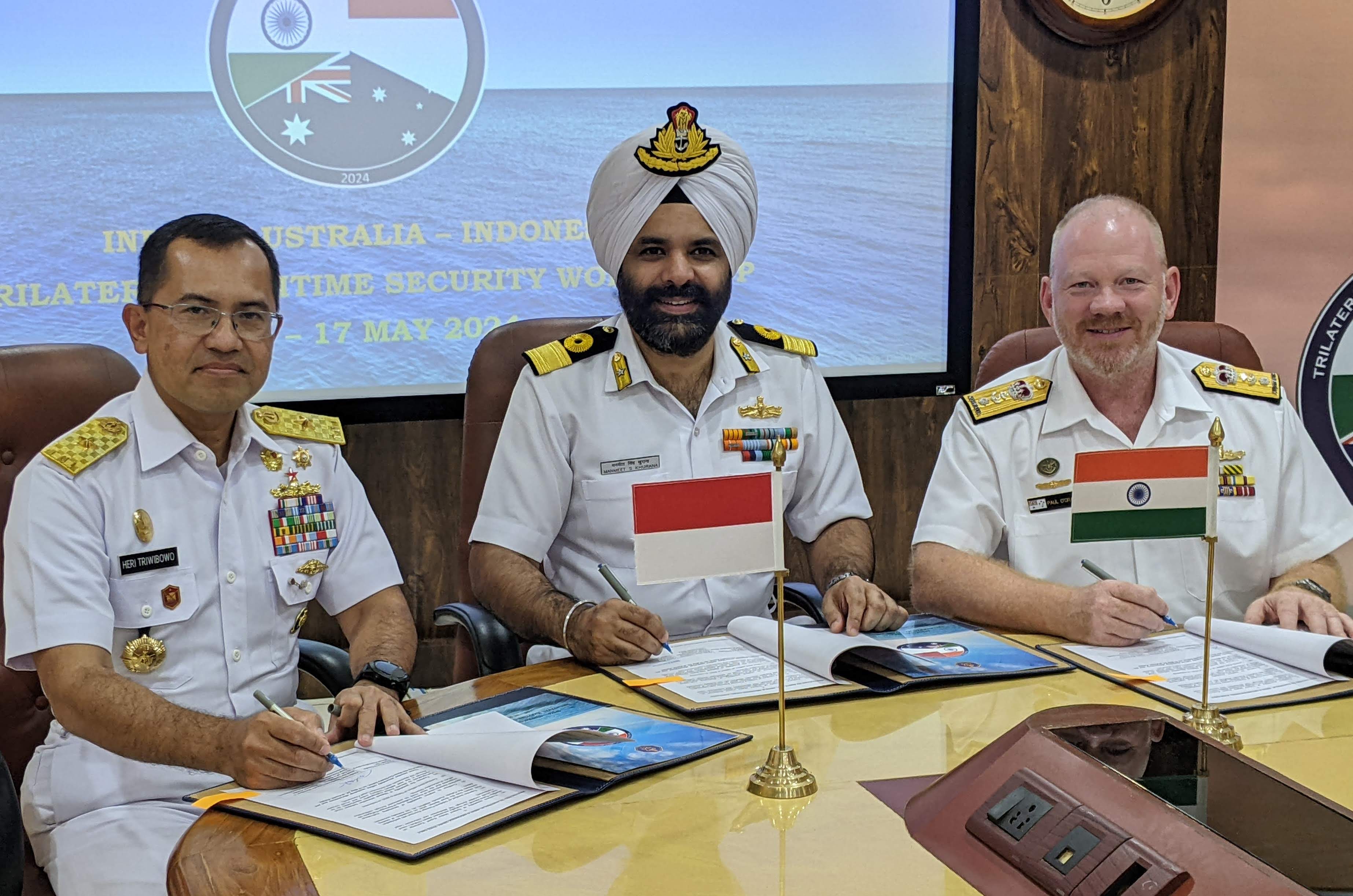
Indian naval ships complete deployment to South China Sea
NEW DELHI : India continues to expand its maritime engagement with Southeast Asia as part of the larger cooperation in the Indo-Pacific in line with Act East and ASEAN (Association of Southeast Asian Nations) centrality. In the latest such engagement, three Indian Navy ships — destroyer Delhi, fleet tanker Shakti and anti-submarine corvette Kiltan — concluded an operational deployment to South China Sea under the Navy’s Eastern Fleet that saw port calls beginning with Singapore, Malaysia, Vietnam, Philippines and Brunei.
In another development last week, the second edition of the India-Australia-Indonesia trilateral maritime security workshop as well as the India-Australia navy staff talks were held in Kochi. Eight initiatives to boost maritime cooperation were agreed, according to the Australian Navy.
In April, the Indian Coast Guard’s (ICG) pollution control vessel Samudra Paheredar was on an overseas deployment to ASEAN countries during which it visited Vietnam, Philippines and Brunei. ICG has a memorandum of understanding towards enhanced maritime cooperation and maritime safety and security with the Coast Guards of the Philippines and Vietnam.
“We are visiting friendly foreign countries to share our experiences and best practices with the host nation navies,” said Rear Admiral (RAdm) Rajesh Dhankhar, Flag Officer Commanding Eastern Fleet, who is leading the operational deployment. The deployment has been a regular practice for a long time building on growing bilateral partnerships.
In general, the port calls included subject matter expert exchanges with navies of host countries, maritime partnership exercises, cross deck visits, sports fixtures, cultural exchanges and collaborative community outreach programmes.
“The two nations share common interests particularly in maintaining peace and order in the Indo-Pacific region,” RAdm Dhankar said on the visit of the ships to Philippines from May 19 to 23. The visit provided an opportunity for discussions on enhancing naval cooperation and interoperability between navies of India and Philippines, the Navy said.
Southeast Asia is a major focus area as India looks to scale up its defence exports and several countries have expressed interest in procuring a range of Indian military hardware, including BrahMos cruise missiles, helicopters, radars among others. In addition to common maritime threats, the rapid expansion of Chinese naval presence in the region is a matter of concern for all the countries.
On May 24, anti-submarine corvette INS Kiltan arrived at Cam Ranh Bay, Vietnam, and both sides conducted a maritime partnership exercise at sea towards enhancing “interoperability and exchange of best practices”. Last July, Indian handed over indigenous missile corvette INS Kirpan that was decommissioned from service, the first instance of India gifting a fully operational corvette to any friendly foreign country.
During the workshop, discussions were centred on a wide array of topics, canvassing present day opportunities and challenges in the Indian Ocean Region (IOR), including information exchange mechanisms and capabilities of Indian Navy’s Information Fusion Centre for IOR, maritime domain awareness, non-traditional and illicit maritime activities, Maritime Law enforcement, capability enhancement and capacity building, avenues for enhancing interoperability and cooperation, the Navy said in a statement.
“Protecting our shared maritime home the 2nd trilateral maritime security workshop with Indian Navy and Indonesian Navy has agreed on eight landmark initiatives to boost maritime cooperation,” the Royal Australian Navy said on ‘X’.
With respect to Indonesia, a vital first step would be the conclusion of a maritime information sharing agreement between the two countries, an official source in the know said noting similar agreements have been signed by New Delhi with most regional countries as well as global maritime security constructs. “This would set a strong foundation for expanding joint security efforts at countering various security challenges in the region,” the source said. In particular – maritime piracy and armed robbery at sea, drug and gun-running originating from disturbed regions in Southeast Asia as well as illegal human migration could be more effectively addressed by both nations through cooperative efforts.
